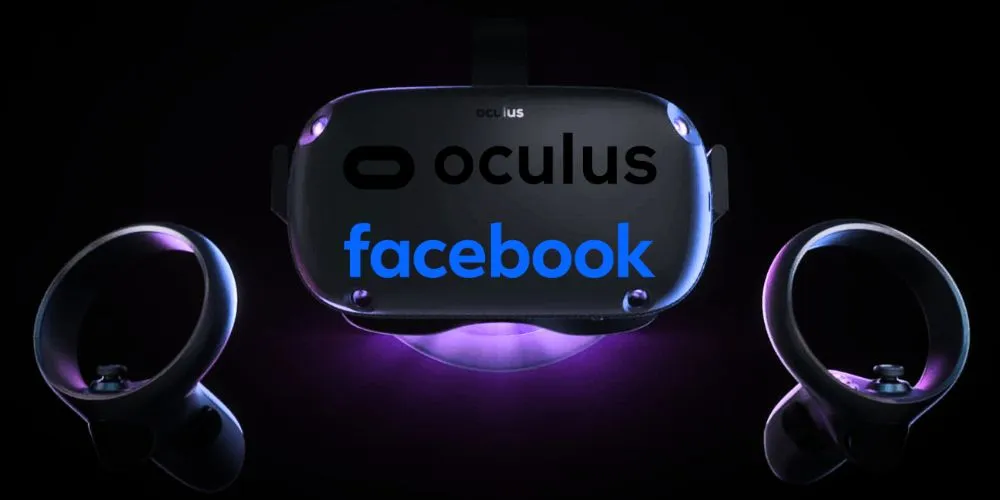Facebook’s acquisition of Oculus VR in 2014 marked a significant milestone in the tech industry’s journey toward virtual reality (VR). By purchasing the company for approximately $2 billion, Facebook aimed to integrate VR technology into its platform, expanding its reach beyond social networking into immersive experiences. This case study explores the background of Oculus, the rationale behind the acquisition, the challenges faced during integration, and the broader implications for social media, technology, and the gaming industry.
Background of Oculus VR
Oculus VR was founded 2012 by Palmer Luckey to revolutionize how people experience gaming and digital content.
The Rise of Oculus VR
Oculus VR quickly gained prominence in the gaming industry.
- Kickstarter Success: In 2012, Oculus launched a Kickstarter campaign to fund the development of its Rift headset. The campaign exceeded its goal by raising nearly $2.5 million from over 10,000 backers, generating significant buzz and interest in VR technology.
- Innovative Technology: Oculus Rift showcased advanced technology, including low-latency head tracking and high-resolution displays, which provided an unprecedented immersive gaming experience. Gamers and developers alike were excited about VR’s potential, leading to partnerships and support from major gaming companies.
Facebook’s Vision for the Future
Facebook, founded by Mark Zuckerberg in 2004, primarily focused on connecting people through its social networking platform.
- Expanding Beyond Social Media: By 2014, Facebook had grown substantially, with over 1.3 billion monthly active users. However, Zuckerberg envisioned a future where Facebook would evolve beyond a social network into a platform for immersive experiences and virtual interaction.
- Interactivity and Engagement: Zuckerberg believed that VR could redefine how people communicate and interact online, creating a new medium for social engagement. By integrating VR into Facebook’s ecosystem, the company aimed to foster deeper user connections.
The Acquisition Process
Facebook announced its acquisition of Oculus VR in March 2014, which surprised many in the tech industry.
Rationale Behind the Acquisition
Several vital factors motivated Facebook’s decision to acquire Oculus.
- Strategic Diversification: The acquisition allowed Facebook to diversify its portfolio and explore new revenue streams beyond advertising. By investing in VR technology, Facebook aimed to position itself at the forefront of an emerging market with significant growth potential.
- Enhancing User Experience: Facebook recognized the opportunity to improve user experiences by integrating VR into its platform. This could lead to innovative social interaction, gaming, and content consumption applications, transforming how users engage with digital media.
- Securing a Competitive Edge: By acquiring Oculus, Facebook aimed to secure a competitive advantage in the growing VR market. With numerous companies exploring VR technology, acquiring a leading player like Oculus gave Facebook a head start in developing its VR ecosystem.
Market Reaction
The acquisition was met with mixed reactions from industry analysts and stakeholders.
- Skepticism: Some industry experts questioned the strategic fit between a social networking platform and a gaming-focused VR company. Skeptics worried that Facebook’s core business model might not align with the unique challenges and demands of the VR market.
- Optimism for VR’s Future: Conversely, many saw the acquisition as a validation of VR’s potential. The involvement of a major player like Facebook could accelerate the development and adoption of VR technologies, leading to new opportunities for developers and content creators.
Integration Challenges
Despite the potential benefits of the acquisition, Facebook faced several challenges in integrating Oculus into its operations.
Cultural Differences
The integration process revealed significant cultural differences between Facebook and Oculus.
- Startup Culture vs. Corporate Structure: Oculus operated as a startup with a flexible, innovative culture, while Facebook had a more structured corporate environment. This difference in organizational culture led to tensions and challenges in aligning priorities and processes.
- Employee Morale: The acquisition raised concerns among Oculus employees about the company’s future direction. Many employees worried that Oculus’s creative and entrepreneurial spirit would be stifled under Facebook’s corporate governance.
Product Development and Direction
The direction of Oculus’s product development was scrutinized after the acquisition.
- Focus Shift: The company initially focused on gaming, but Facebook aimed to explore broader applications for VR, including social interaction and content creation. This shift in focus led to uncertainties about the company’s product roadmap and priorities.
- Delayed Launches: The integration challenges and changes in product strategy delayed the release of the Oculus Rift. The anticipated consumer version of the headset faced setbacks, leading to frustration among early adopters and developers.
Strategic Developments Post-Acquisition
Despite the challenges, Facebook pursued several strategic initiatives to enhance Oculus’s presence in the VR market.
Product Launches
Facebook successfully launched the consumer version of Oculus Rift in March 2016, marking a significant milestone for the company.
- High-Quality Hardware: The consumer version of Oculus Rift featured improved hardware, including higher-resolution displays and advanced motion tracking technology. These enhancements positioned the headset as a competitive option in the emerging VR market.
- Content Ecosystem: Facebook emphasized the importance of building a robust content ecosystem for Oculus. By partnering with developers and game studios, Facebook aimed to ensure a diverse library of VR experiences and applications at launch.
Expansion into Social VR
Facebook recognized the potential of social interaction within virtual environments and focused on developing social VR applications.
- Oculus Rooms and Social Apps: Facebook introduced social VR experiences like Oculus Rooms, allowing users to interact with friends in virtual spaces. This move aligned with Zuckerberg’s vision of using VR to enhance social connectivity and user engagement.
- Event Hosting: Facebook explored hosting events and experiences within VR, enabling users to attend concerts, conferences, and gatherings in a virtual setting. These initiatives aimed to create new forms of social interaction and engagement.
Market Dynamics and Competition
The acquisition of Oculus placed Facebook in direct competition with other tech giants exploring VR technologies.
Competitive Landscape
As Facebook invested in Oculus, the VR market became increasingly competitive.
- Emerging Competitors: Companies like HTC, Sony, and Valve entered the VR space, offering competing products and experiences. The introduction of HTC Vive and PlayStation VR intensified the competition, pushing Facebook to enhance its offerings.
- Evolving Consumer Preferences: As consumer interest in VR grew, companies needed to adapt to changing preferences and expectations. Gamers sought high-quality content, immersive experiences, and social interactions within virtual environments.
Pricing Strategies
Pricing became a critical factor in the success of VR products.
- Affordability: Oculus positioned itself as a premium product, but the pricing strategy needed to remain competitive in a rapidly evolving market. The high cost of VR headsets initially limited consumer adoption, prompting discussions about pricing adjustments.
- Bundles and Promotions: Facebook implemented bundle deals and promotional offers to increase adoption, pairing the Oculus Rift with popular games or experiences. This strategy aimed to enhance value and entice consumers to invest in VR technology.
The Future of Oculus and VR
Facebook’s acquisition of Oculus set the stage for ongoing developments in VR technology and its applications.
Innovations and Advancements
As the VR market evolved, Facebook invested in research and development to drive innovation.
- Standalone Devices: Facebook introduced standalone VR headsets, such as the Oculus Quest, eliminating the need for external hardware. This innovation made VR more accessible and user-friendly, appealing to a broader audience.
- Advanced Tracking and Interaction: Future advancements in tracking technology and interaction methods aimed to enhance the immersive experience. Innovations like hand tracking and improved spatial awareness contributed to more natural interactions within virtual environments.
Broader Applications of VR
Facebook’s vision for VR extended beyond gaming and social interaction.
- Education and Training: VR’s potential in education and training opened new opportunities for immersive learning experiences. Facebook explored partnerships with educational institutions to develop VR applications that could enhance teaching and training methodologies.
- Healthcare and Therapy: VR also gained traction in healthcare, with applications in therapy, pain management, and rehabilitation. Facebook’s commitment to exploring diverse applications positioned Oculus as a versatile tool for various industries.
Regulatory and Ethical Considerations
As VR technology continued to grow, regulatory and ethical considerations emerged.
- Privacy Concerns: The collection of user data within virtual environments raised privacy concerns. Facebook faced scrutiny over its data practices, emphasizing the need for transparency and responsible data management in VR experiences.
- Impact on Social Interaction: The effect of VR on social interaction and mental health became topics of discussion. As virtual environments provided immersive experiences, it was essential to consider the potential impact on users’ well-being and social dynamics.
Conclusion
Facebook’s acquisition of Oculus VR marked a transformative moment in the tech industry’s virtual reality exploration. By integrating Oculus into its ecosystem, Facebook aimed to redefine social interaction and create immersive user experiences. Despite the challenges faced during the integration process, the acquisition positioned Facebook as a critical player in the burgeoning VR market.
As VR technology continues to evolve, Facebook’s commitment to innovation and expansion will play a crucial role in shaping the future of virtual reality. The integration of VR into various sectors, from gaming to education and healthcare, highlights the vast potential of this technology. Ultimately, Oculus’s journey within Facebook underscores the importance of adapting to changing consumer preferences and the need for responsible practices in developing and deploying immersive technologies.












